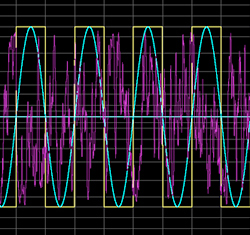
Because the toaster test limits the response change of the loudspeaker to no more than 3 dB, we are assured that this is the maximum SPL reduction that will be encountered.
It is much more likely that this 3 dB variation will occur not over the entire frequency range of the loudspeaker, but instead over a limited bandwidth. This being the case our overall SPL reduction will typically be much less.
If we know the SPLMUCO of the loudspeaker when driven at max Vrms then we can calculate the resulting reduction in SPL due to the thermal effects. Including this data on the loudspeaker specification sheet as well as the data files for room modeling programs may be helpful in this regard.
The max Vrms and SPLMUCO ratings for the loudspeaker characterize its performance for one scenario, or type of input signal. These ratings can be morphed into other scenarios by changing the crest factor, distance, and desired SPL. This can be done mentally if one is proficient in decibel notation.
Let’s go through an example of exact how to calculate this. To determine the size of the amplifier needed to pass our speech signal without clipping we look at the signal’s crest factor, which is 15 dB. We can calculate the peak voltage required from the amplifier using the following equation.
For our 15 dB crest factor speech signal and required RMS voltage of 17.9 Vrms this gives us a peak voltage requirement of 101 Vpeak.
A sine wave, with its 3 dB crest factor, which has this same peak voltage of 101 Vpeak will have an RMS voltage of 71.4 Vrms. An amplifier rated to deliver 638 W into an 8-ohm load will meet this requirement. This is quite a bit larger than the Equivalent Amplifier Size of 256 W for this loudspeaker as determined by the toaster method using a 6 dB crest factor signal.
A somewhat more direct method to determine the Required Amplifier Size is given by the following equation. EAS is the Equivalent Amplifier Size given in the CLF file for the loudspeaker. CF is the Crest Factor of the anticipated program material. Gain Possible is the gain given in the CLF file based on the maximum Vrms. Gain Required is the gain required for the loudspeaker to reach the desired SPL.
The subtraction of 6 dB in the exponent of this equation is necessary as that is the crest factor of the signal used during the toaster test to determine the max Vrms, and subsequently EAS and Gain Required.
For our example system design these values would be:
EAS = 256 W
CF = 15 dB
Gain Possible = 21 dB
Gain Required = 16 dB
So, RAS = 256 W * 2.51 = 643 W
Which reduces to RAS = 256 W * 10 (0.4) = 256 W * 251 = 643 W
There is a slight difference, most probably due to rounding, between this value and the previously calculated 638 W. This difference is not significant being less than 0.04 dB. A 600-700 W power amplifier is not exceeding large or difficult to obtain so it may make for a good design decision to go this route.
What if the same loudspeaker was used in an application requiring greater SPL? Say we needed 91 dB SPL at 20 m. This is equivalent to 97 dB at 10 m. This loudspeaker will require 19 dB of gain to achieve this.
Let’s also account for some SPL loss due to power compression by adding in another 2 dB. This brings us to 21 dB of gain required. Coincidentally, this is the limit of the gain possible for this loudspeaker, 21 dB.
For this higher required SPL we have,
RAS = 256 W * 10 (15 dB – 6dB – 21dB + 21 dB/10) = 256 W * 10 (0.9) = 256 W * 7.94 = 2,033 W
This is a much larger power amp! But this is what will be required to cleanly pass the 15 dB crest factor program material without clipping.
When this amplifier is supplying the required RMS voltage to achieve the desired SPL the voltage peaks delivered to the loudspeaker will be approximately 180 Vpeak!
